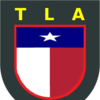HOME | DD
 TheGreyPatriot — Estonian 4221st Guard Company [US Army]
TheGreyPatriot — Estonian 4221st Guard Company [US Army]

#army #banner #description #emblem #estonia #estonian #europe #european #flag #grunge #guards #historical #history #military #police #seal #security #ss #standard #ww2 #coatofarms #unitedstates #unitedstatesarmy #unitedstatesofamerica #worldwar2 #united_states #united_states_of_america #coat_of_arms #world_war_2 #unitedstatesamerica
Published: 2022-02-09 21:57:09 +0000 UTC; Views: 11878; Favourites: 77; Downloads: 12
Redirect to original
Description
Today lets talk about what happened to Estonian Waffen-SS volunteers who surrendered to US Army. Enjoy 
The 20th Waffen Grenadier Division of the SS (1st Estonian) was a foreign infantry division of the Waffen-SS, an armed branch of the German Nazi Party that served alongside but was never formally part of the Wehrmacht during World War II. It was officially activated on 24 January 1944, and many of its soldiers had been members of the Estonian Legion and/or the 3rd Estonian SS Volunteer Brigade, which had been fighting as part of German forces since August 1942 and October 1943 respectively. Both of the preceding formations drew their personnel from German-occupied Estonia. Shortly after its official activation, widespread conscription within Estonia was announced by the German occupying authorities. The division was formed in Estonia around a cadre comprising the 3rd Estonian SS Volunteer Brigade, and was initially known as the 20th Estonian SS Volunteer Division.
A total of 38,000 men were conscripted in Estonia, while other Estonian units that had been part of the German Army and the Finnish Infantry Regiment 200 were transferred to Estonia. In April 1944 division had a designated strength of 16,135 men and between March and September 1944 had a total of 13,700 men pass through the reserve units and by August 1944 some 10,427 were killed or missing. The unit fought the Red Army on the Eastern Front and surrendered in May 1945.
In the spring of 1946, out of the ranks of those who had surrendered to the Western allies in the previous year, a total of nine companies were formed. One of these units, the 4221st Guard Company, formed from some 300 men on 26 December 1946, guarded the external perimeter of the Nuremberg International Tribunal courthouse and the various depots and residences of US officers and prosecutors connected with the trial. The men also guarded the accused Nazi war criminals held in prison during the trial, up until the day of execution.
The Nuremberg tribunal allegedly ruled that the 30,000 Estonians who had served in the Baltic Legions were conscripts, not volunteers, and defined them as freedom fighters protecting their homelands from a Soviet occupation and as such they were not true members of the criminal Waffen SS.
Subsequently, on 13 April 1950, a message from the Allied High Commission (HICOG), signed by John J. McCloy to the Secretary of State, clarified the US position on the Baltic Legions: "they were not to be seen as 'movements', 'volunteer', or 'SS'. In short, they had not been given the training, indoctrination, and induction normally given to SS members".
The US Displaced Persons Commission declared in September 1950 that: "The Baltic Waffen SS Units (Baltic Legions) are to be considered as separate and distinct in purpose, ideology, activities, and qualifications for membership from the German SS, and therefore the Commission holds them not to be a movement hostile to the government of the United States."
Main Source Used: en.wikipedia.org/wiki/20th_Waf…
Related content
Comments: 5

👍: 1 ⏩: 0

👍: 1 ⏩: 1

👍: 0 ⏩: 1

👍: 0 ⏩: 1

👍: 0 ⏩: 0


















